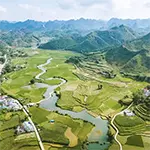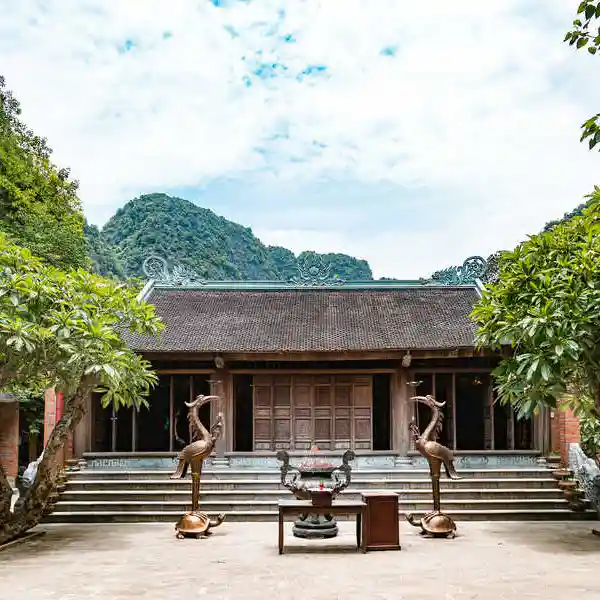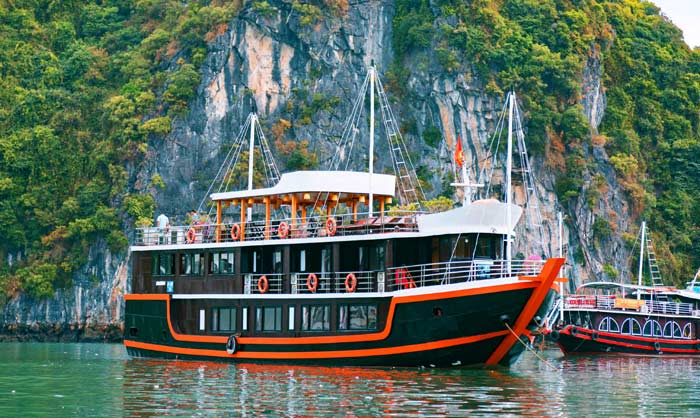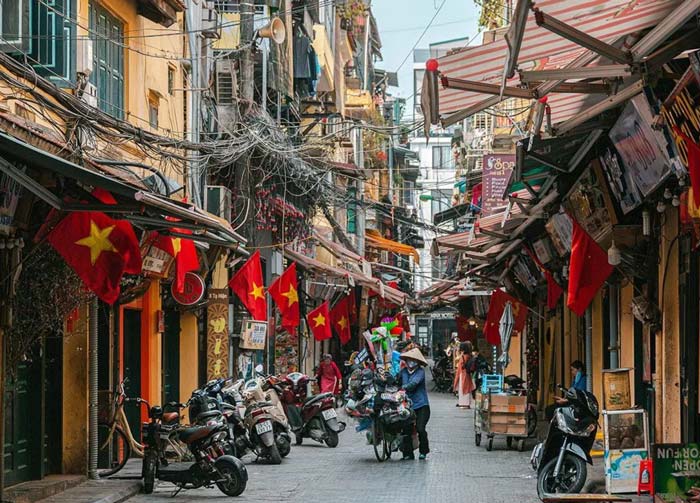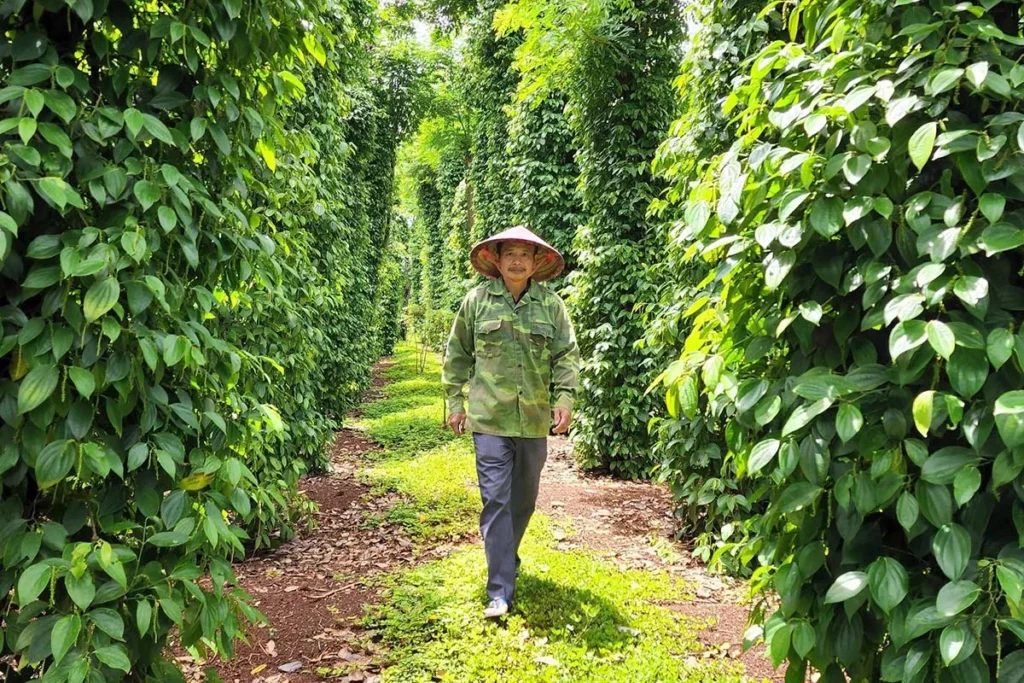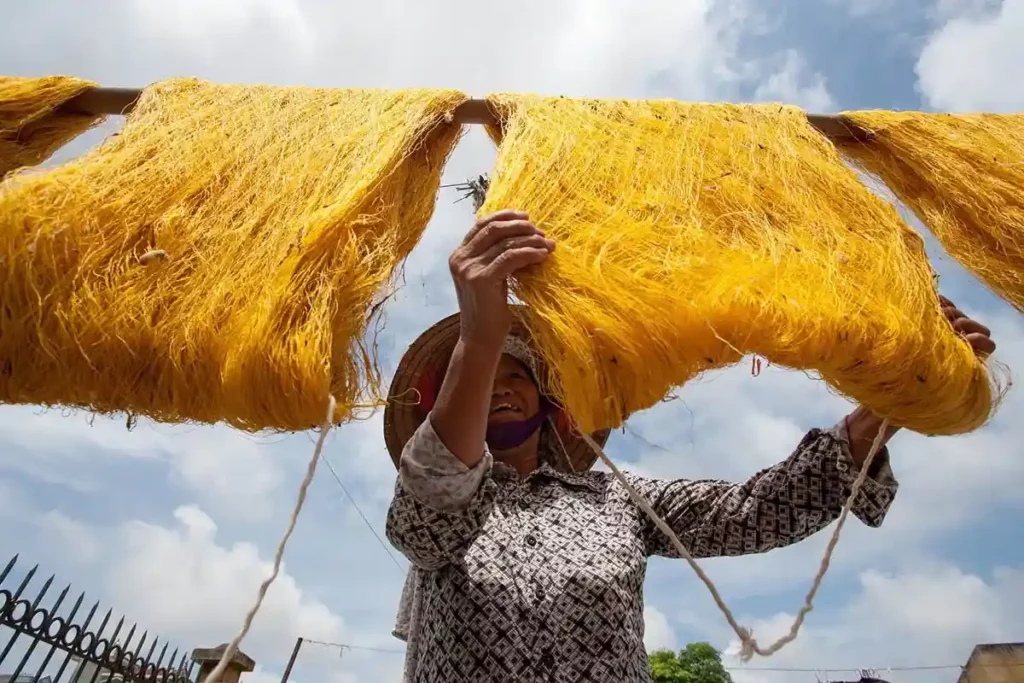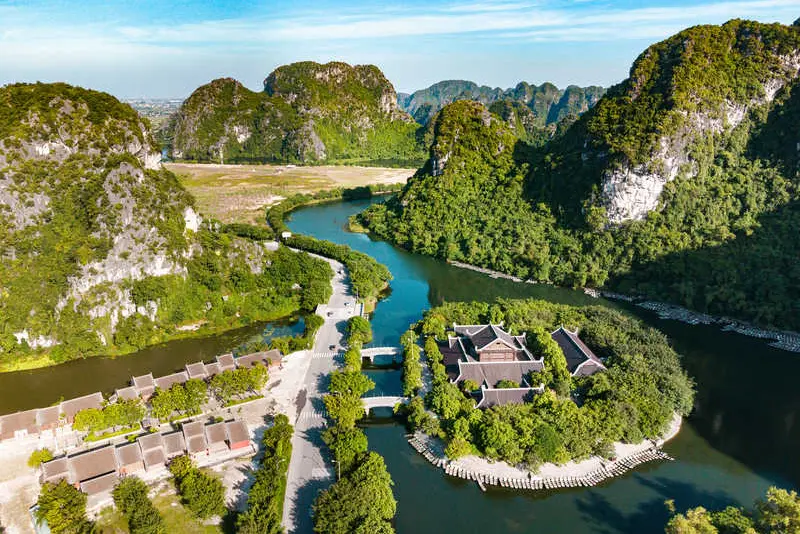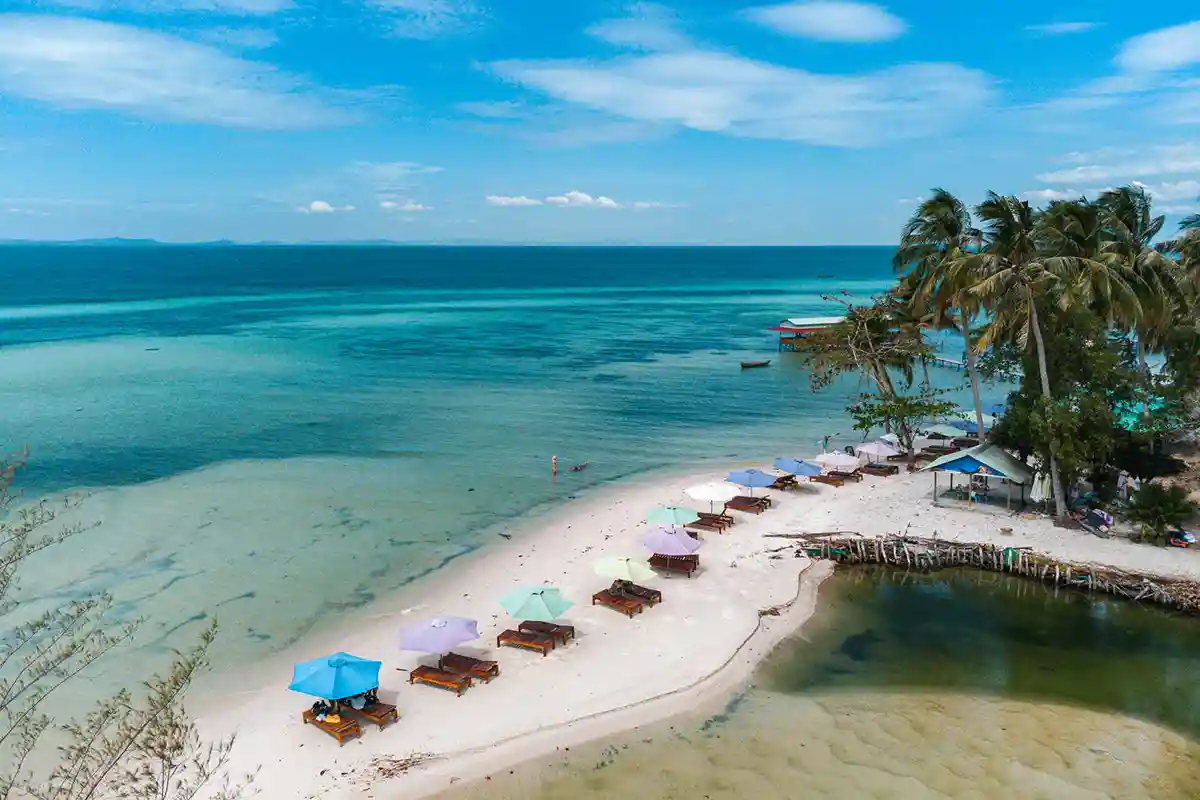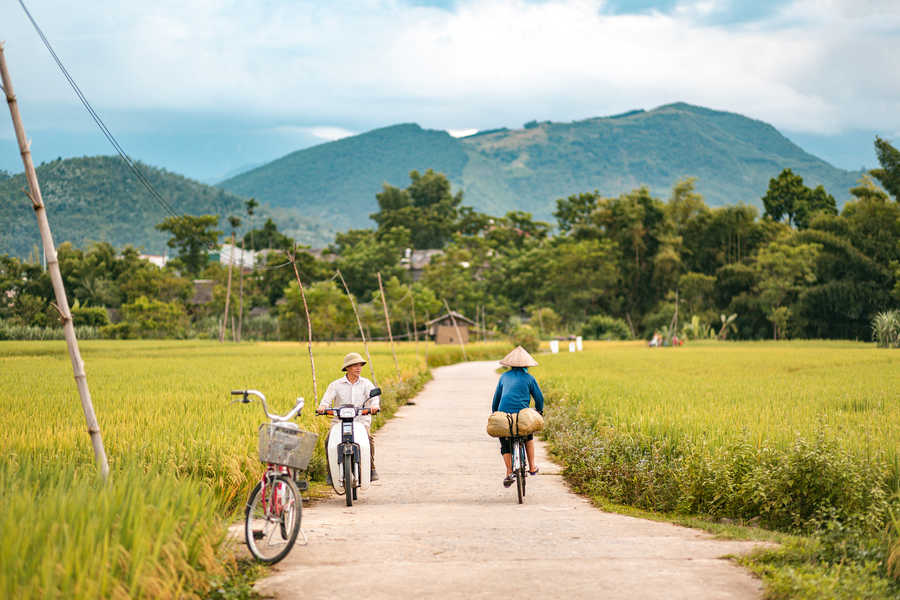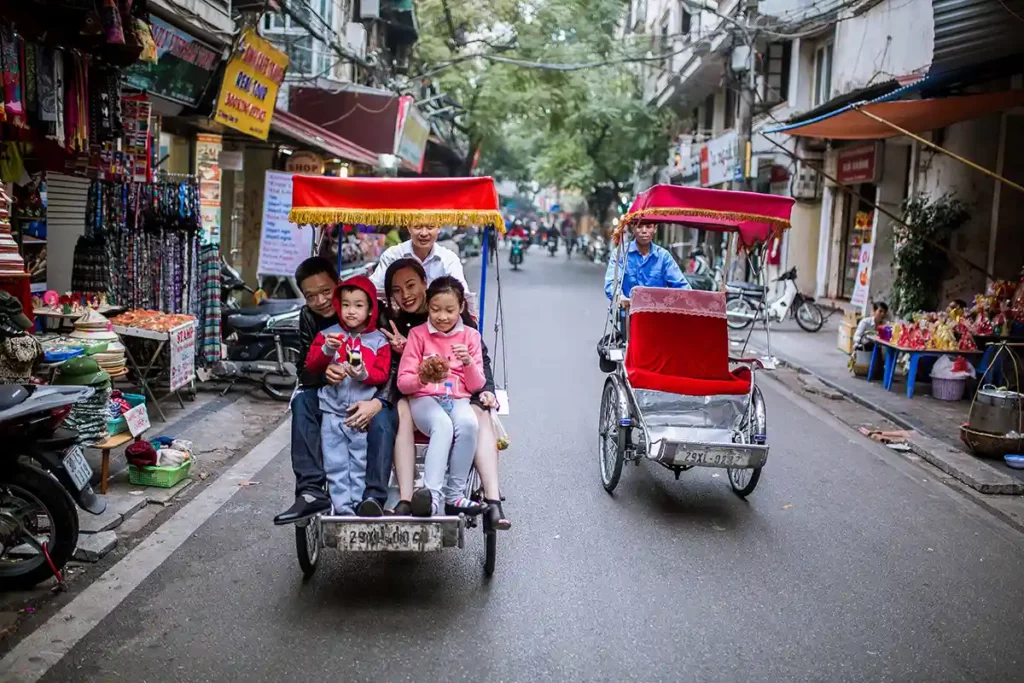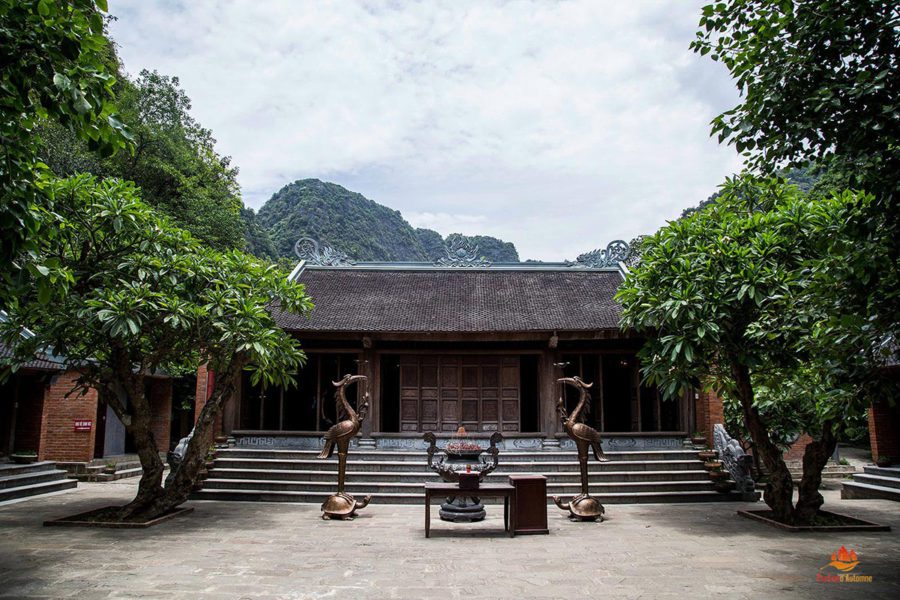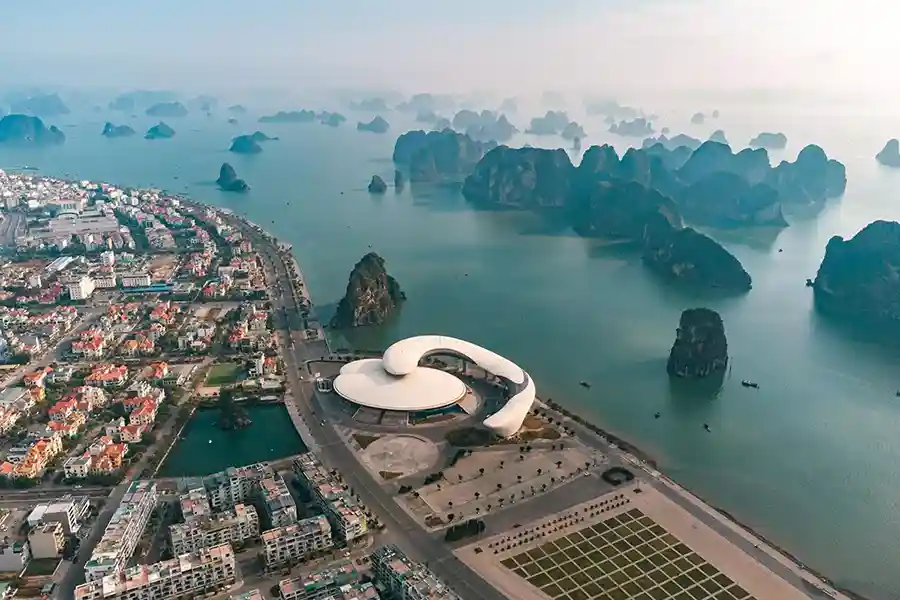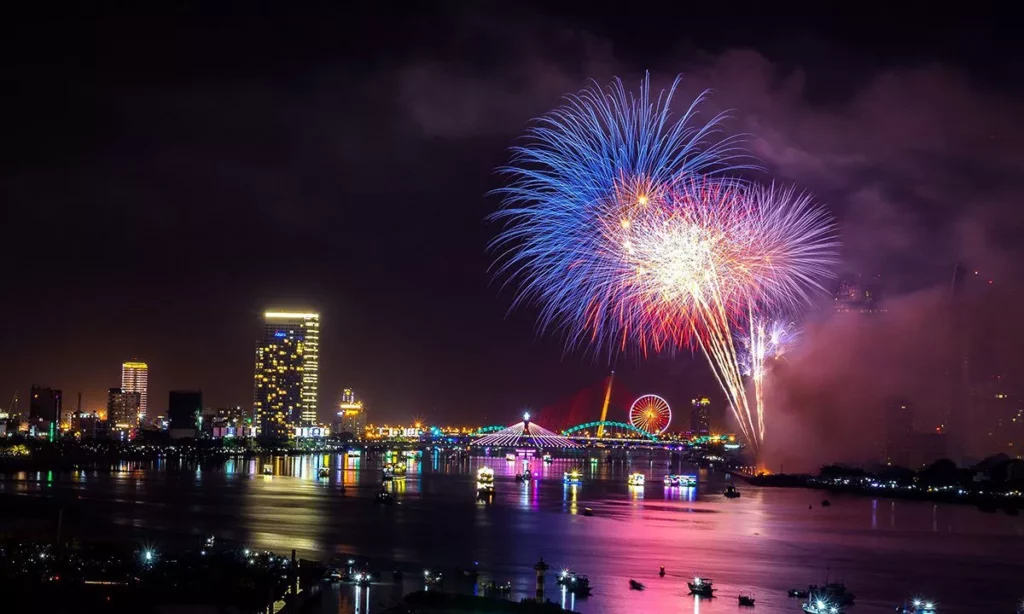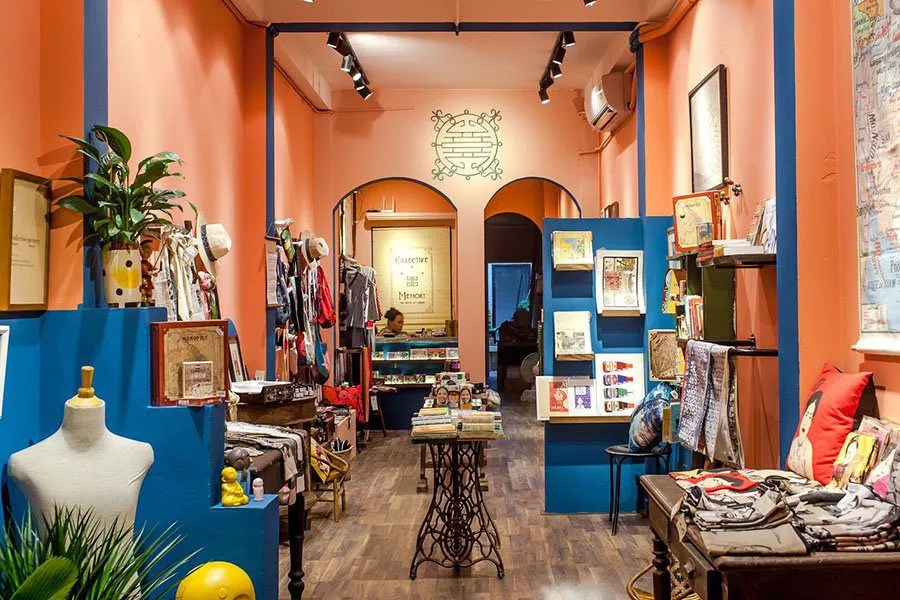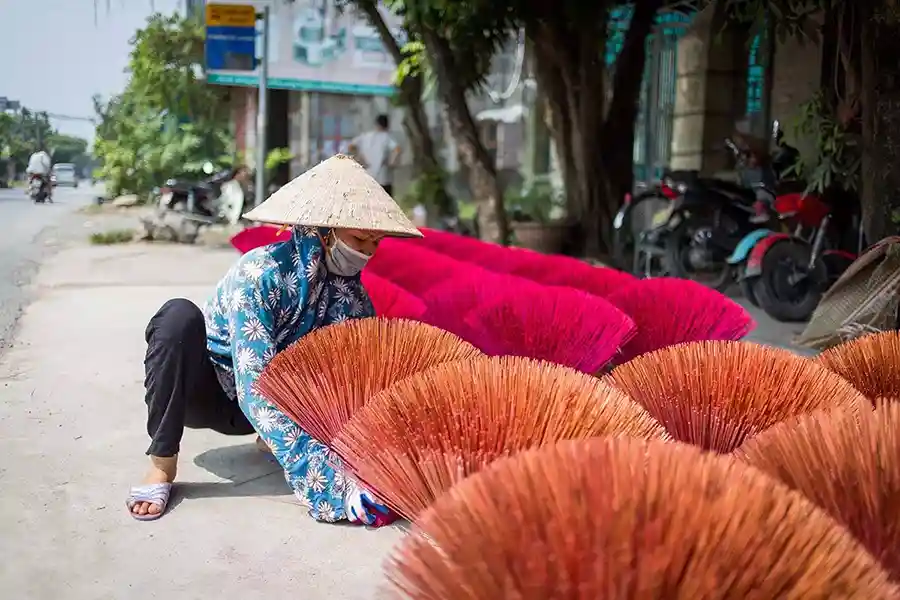Do you know the Khu Tap Thê, those former collective housing blocks built in Hanoi after the country’s independence and up until the 1980s?
Our article traces the history of this distinctive type of housing in the Vietnamese capital.
Many of them are still standing as they were, and they are fascinating to photograph during your visit to Hanoi. They symbolize the past of a communist society now moving toward individualization.
History of the Khu Tap Thê
For a long time, the traditional housing of Hanoi resembled what can still be found in the Old Quarter of the capital: narrow and tall houses.
After the country’s independence in 1945, the city began to be developed differently, and new types of housing emerged. This was the case with the Khu Tap Thê (KTT), collective housing complexes built to accommodate people working in government offices and state-owned enterprises. Inspired by Soviet urban planning, these buildings consisted of very small apartments (around 9m²) that shared kitchens and toilets. Originally, there was on average one kitchen and one bathroom for every three or four apartments. Life was also organized around communal facilities within the KTT, such as markets, parks, and daycare centers. All these facilities were managed by the State, as private ownership was prohibited.
Built to meet the growing demand for housing, the KTT also represented, for a short period, the socialist way of life. However, this model was quickly adapted by the residents themselves, who built extensions to their apartments in order to gain more space and privacy. This is how one can still see today from the outside the so-called “tiger cages”, those added structures that allow residents of these cramped apartments to dry their clothes, among other things.
These housing complexes were built until the 1980s, when the USSR began experiencing a political and economic crisis that eventually led to its collapse. During this period, other communist countries also faced crises, which, for some — such as Vietnam — resulted in major transformations. The adoption of Doi Moi (Renovation) in 1986 by the Socialist Republic of Vietnam was largely a consequence of the gradual fall of the USSR and the end of its financial support. The shift in direction introduced at that time — characterized by a controlled liberalization of the economy — brought about the end of KTT construction. Previously rental housing, these complexes were transferred to residents, on the condition that they would henceforth take responsibility for their maintenance.
Many KTTs still exist today, standing as a testimony to a socialist past which, while still shaping the habits of the older generations, is now far removed from the modern aspirations of the youth. Housing in Vietnam’s major cities is now heavily influenced by market-driven real estate strategies. The increasing individualization of lifestyles goes hand in hand with a growing commodification of services, with residents increasingly viewed as consumers — as illustrated by developments such as Vingroup or Ecopark.
The construction of the Khu Do Thi (KDT) — new residential complexes built from the 2000s onward for government employees — reflects this shift in mindset. While the KTTs were designed to embody a socialist way of life, the KDTsperfectly represent Hanoi’s new urban development, driven by land and housing speculation. Indeed, in most cases, civil servants who acquire apartments in KDTs at modest prices later resell them for much higher sums, profiting from speculation. Urban housing in Hanoi today thus seems to stand in stark contrast to the socialist ideals that once guided its creation.
While the socialist way of life did not last long, it is interesting to look at the processes of appropriation and reappropriation of these KTTs. As we have seen, residents quickly adapted them to increase their living space. And today? Could they experience a second life? If they remain standing, could they be reclaimed by the younger generation? Their architecture, colors, and atmosphere could attract young people seeking spaces for artistic expression. For example, an architecture professor and his students have renovated the first floor of a building in the Kim Lien KTT to create a workspace and training center (see Kecho Collective).
Although the KTT housing model may seem outdated in its former socialist spirit, it could become the setting for new collective projects with strong artistic potential. The question remains, however, whether these KTTs will be able to withstand the current intense real estate speculation pressure…
Let’s discover through photos how these KTTs have managed to survive to this day.
Photo Gallery of Khu Tap Thê in Hanoi
Building of a Khu Tap Thê with a modern building under construction in the background, Hanoi
Khu Tap Thê housing seen from the front, Hanoi
Khu Tap Thê housing in the background of a busy street, Hanoi
Exterior view of the apartments in a Khu Tap Thê building, Hanoi
Small shops in the common areas of a Khu Tap Thê, Hanoi
Common areas of a Khu Tap Thê, Hanoi
Common areas of a Khu Tap Thê, Hanoi
Example of a building façade in a Khu Tap Thê, Hanoi
On the landing of apartments in a Khu Tap Thê, Hanoi
Information board at the bottom of a building belonging to a Khu Tap Thê, Hanoi
Exterior decoration, building of a Khu Tap Thê, Hanoi
Plants placed at the bottom of a Khu Tap Thê building, Hanoi
Exterior view of a Khu Tap Thê building, Hanoi
Bia Hoi at the bottom of a Khu Tap Thê building, Hanoi
Collective sports equipment, Khu Tap Thê, Hanoi
Resident taking care of advertising posters at the bottom of his building, Hanoi
Text and photos by Mathieu Arnaudet (www.mathieuarnaudet.com)
Sources:
Cerise E., Maximy René de. (2006). « Voirie et recompositions urbaines à Hanoi« . In : Castiglioni F. (dir.), Cusset J.M. (dir.), Gubry Patrick (dir.), Nguyên Thi Thiêng (dir.), Pham Thuy Huong (dir.). La ville vietnamienne en transition. Paris (FRA) ; Hanoi : Karthala ; IMV, 45-72. (Hommes et Sociétés). ISBN 2-84586-751-4
Julien Trambouze, Dans les cages de tigre d’Hanoi, émission « Point de fuite », RTS, 2019.

